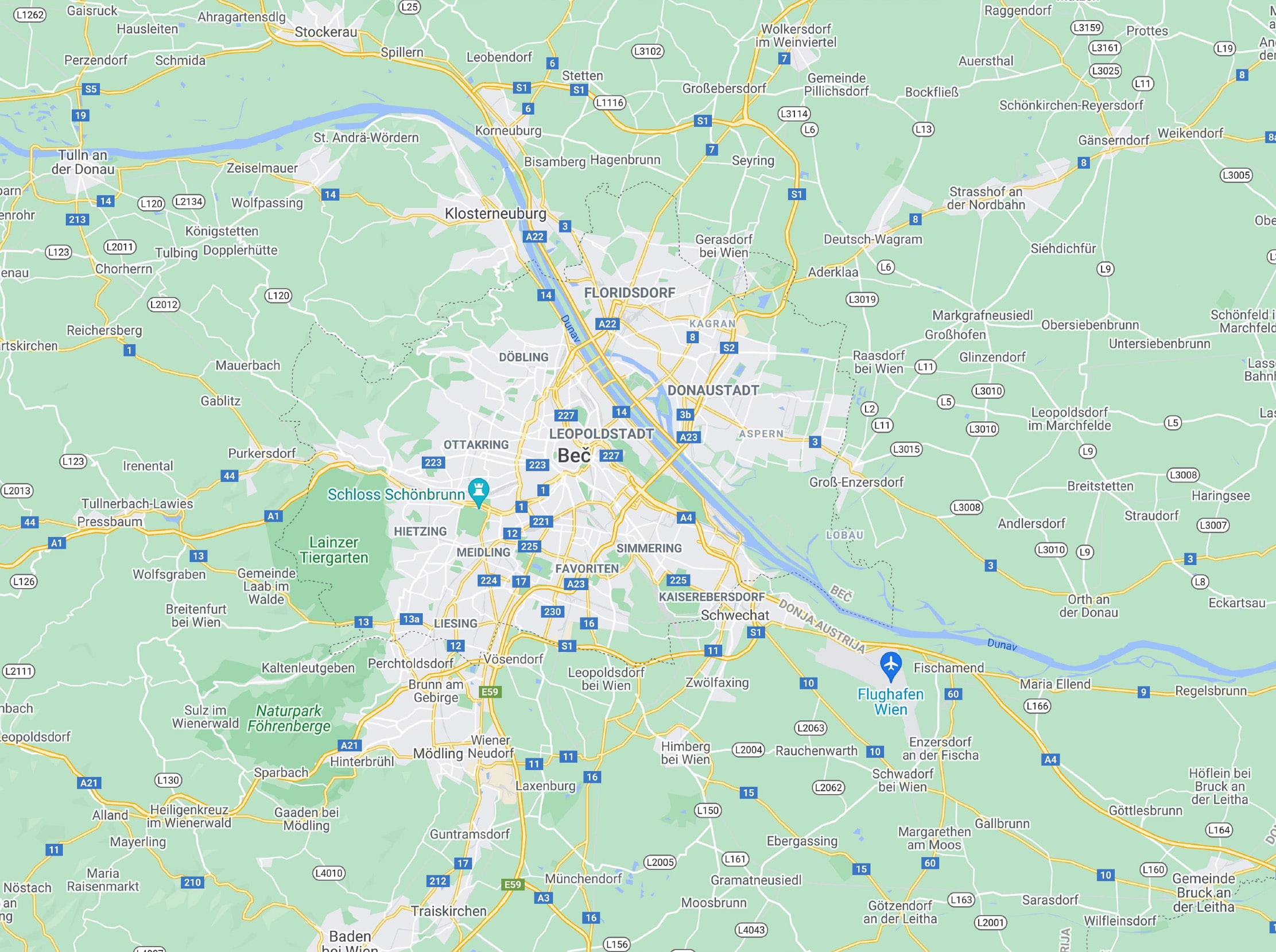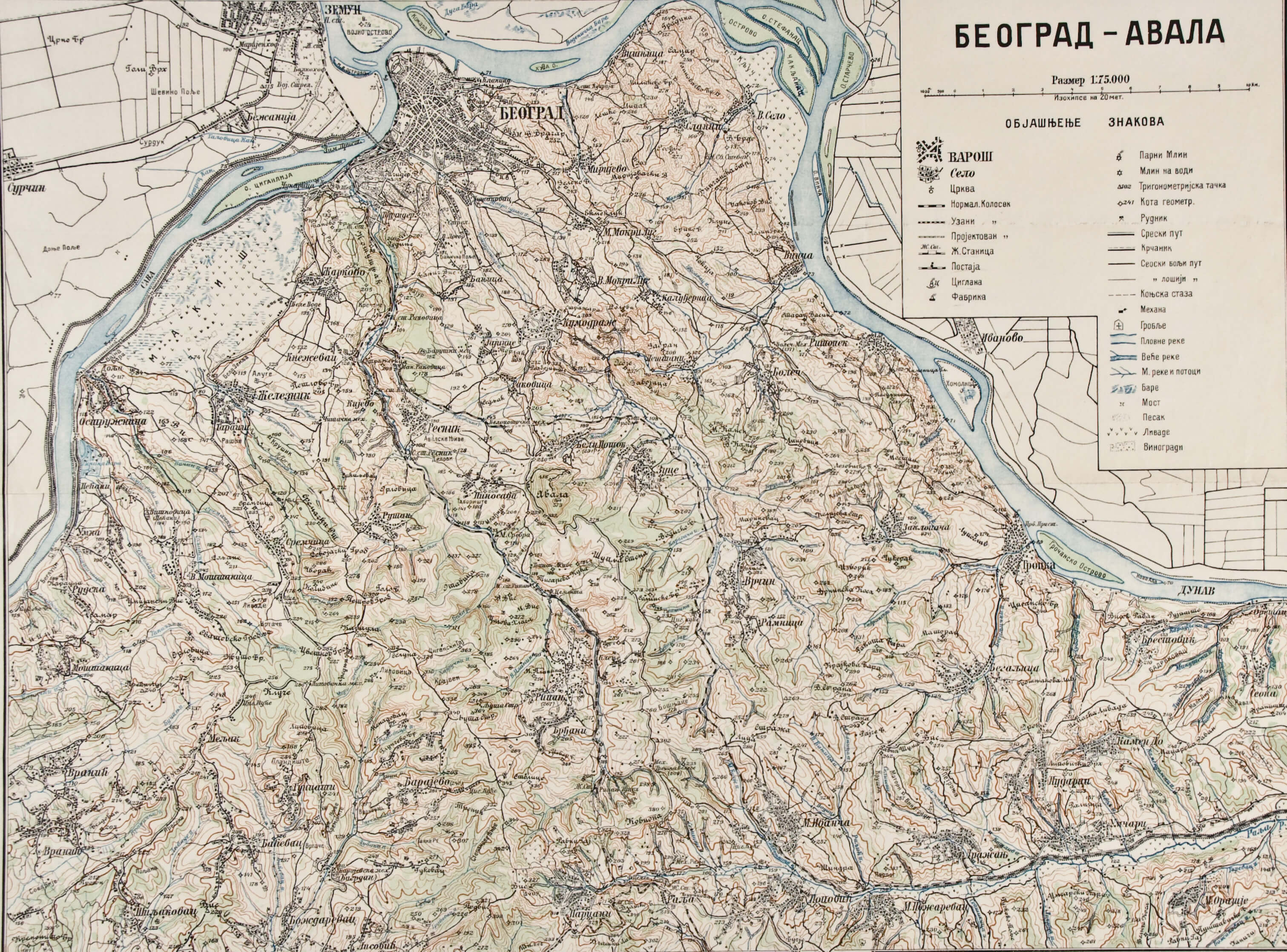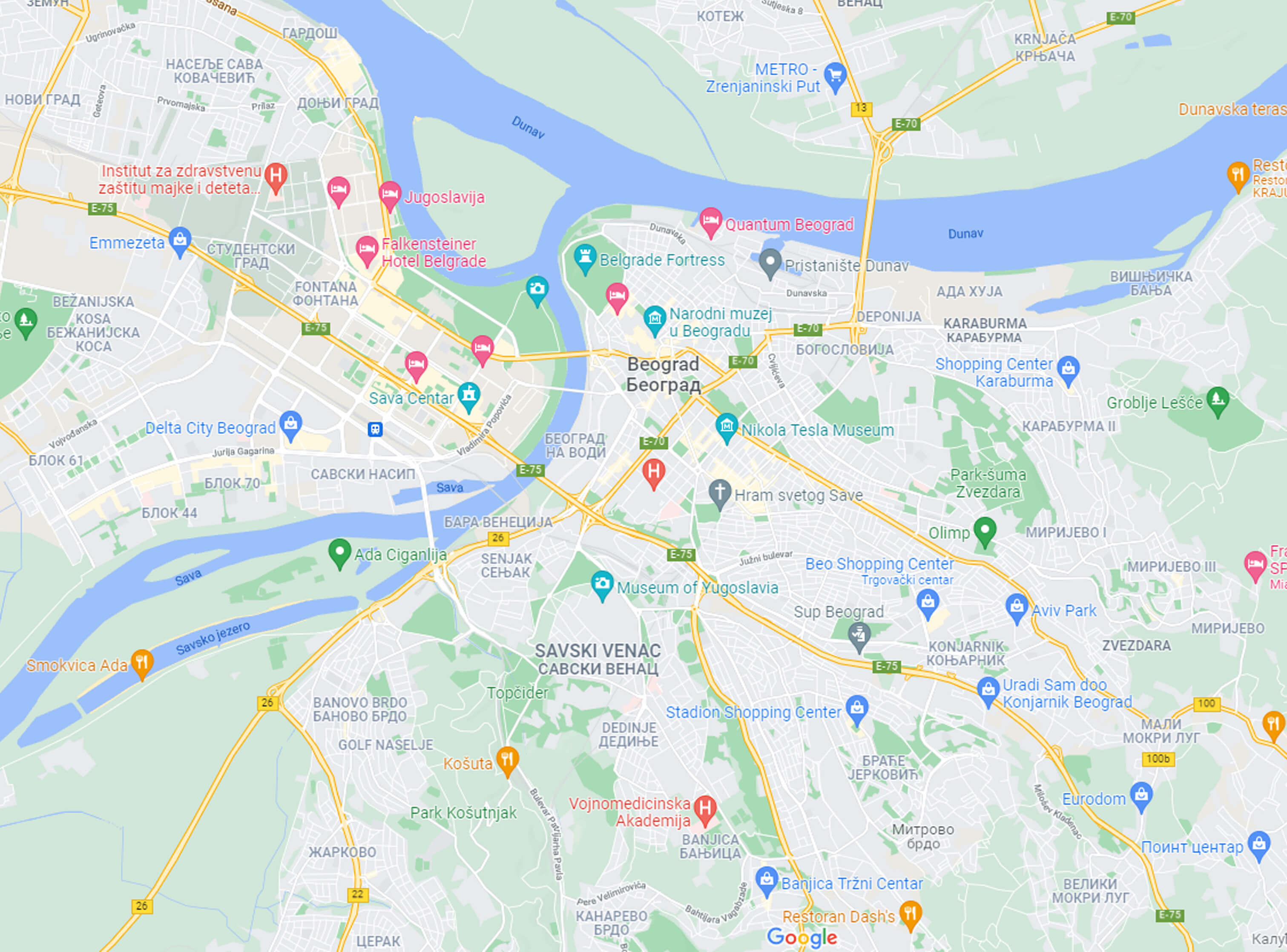By the end of the Wars of the Holy League (1683–1699), most of the Croatian lands were liberated from Ottoman rule, including the territory of Croatia up to the Una river and south of Velebit, and Slavonia and most of Srijem. A large part of the liberated Croatian territory was integrated into the Military Border, an organised anti-Ottoman defensive system administered by the Court War Council, while smaller parts remained under the command of the Croatian ban (viceroy). In the mid-18th century, the Military Border lost its defensive function, and the Croatian nobility hoped that their estates would be returned to the authority of the Croatian Diet and ban. However, this did not happen, and the Military Border became a sort of huge, open-air Habsburg regimental barracks.[3] Despite the cessation of the Ottoman threat, certain territorial, social, and political changes were visible on the newly-liberated Croatian territory, such as border changes, devastation of old settlements, and settlement of foreign noble families (Odescalchi, Hilleprand Prandau, Eltz, etc.), which was encouraged by the Austrian authorities. This led to the weakening of the Croatian nobility and the growing of the centuries-long resistance towards Viennese absolutism. The area of the Croatian-Slavonian Military Border encompassed almost half of Croatia’s territory. Even though it was a constituent part of the Kingdom of Croatia and Slavonia, it remained outside the jurisdiction of the Croatian Diet/Parliament until 1873, when the demilitarisation process began; it was reunited with civilian Croatia in 1881.[4]
In 1758, in the wake of the crises and wars that swept the Habsburg Monarchy during her reign, Empress Maria Theresa conducted a modernisation of the Austrian armed forces, establishing the Quartermaster General Staff (Generalquartiermeisterstab) of the Austrian army, under the command of Marshal Franz Moritz von Lacy (1725–1801). This was the first military institution that, among other things, was responsible for systematic production of topographic maps. Due to a series of conducted state, social, and educational reforms, such as the professionalisation of the army and introduction of military and art schools, the conditions were soon set down for conducting the first, or Josephinian, topographic survey of all the lands of the Habsburg Monarchy (1763–1787), named after the Holy Roman Emperor Joseph II.[5] The greater part of civilian Croatia and Slavonia and the Croatian-Slavonian Military Border were included in the survey of 1774–1785, while a survey of coastal Istria and Dalmatia was not performed.[6] With this first topographic survey, Austrian cartography made important gains and achieved enviable results in the field of world cartography, which it perfected in time by using new surveying methods and discovering quicker and more efficient printing technology, which eventually resulted in the production and reproduction of high quality geographical maps.
One of the best cartographical representations of the Croatian lands produced on the basis of the first topographic survey and kept in the Collection is the map of the Kingdom of Hungary and the military and civilian parts of Croatia and Slavonia entitled Mappa generalis regni Hungariae partiumque adnexarum Croatiae, Slavoniae et confiniorum militarium (inv. no. HPM/PMH-3895). The map was produced in Pest by the Hungarian cartographer and military engineer János Lipszky, with the help of Croat Mirko Danijel Bogdanić, in 1806.
The Josephinian maps with topographic descriptions show the relief forms, hydrographic network, vegetation, roads, settlements, toponyms, and administrative-territorial organisation in great detail, and were made according to the then system of measurement (a Zoll, or Viennese inch, represented 400 Wiener Klafter, or Viennese fathoms, which corresponds to the modern 1:28,800 scale). Due to the very comprehensive geodesic and cartographical effort put into them, the maps were considered a state and military secret until 1864. During the first topographic survey, the Austrian surveyors and engineers also worked on cadastral maps and plans of the landholdings of the Habsburg Monarchy, the so-called Josephinian cadastre. However, the cadastre did not encompass all Croatian lands, but only the area of the Croatian-Slavonian Military Border, Rijeka, and a part of the Littoral.[7]
The application of new knowledge and techniques resulted in the further development of Austrian cartography, which is visible on the maps produced during the second topographic survey (1806–1869), called the Franciscan survey after Francis I, the Austrian and Holy Roman emperor. In 1856, a general map of the Austrian Empire, named General Karte des Oesterreichischen Kaiserstaates mit einem grossen Theile der angrenzenden Lӓnder (inv. no. HPM/PMH-9985–10003/a), was produced in Vienna by Josef von Scheda, the director of the Imperial and Royal Military Geographical Institute, based on the new topographic survey. Scheda’s map is considered one of the best cartographical depictions of the Austrian Empire’s lands in the 19th century. The second topographic survey is the most important for Croatia because it encompassed all the Croatian lands (Istria and the Croatian Littoral 1821–1824, Dalmatia 1851–1853, and Croatia, Slavonia, and the Military Border 1865–1869), which resulted in the creation of topographic map sheets depicting Croatian territory.[8]
The Franciscan maps did not greatly differ from the maps based on the Josephinian survey, even though they were smaller in scale. The topographic maps of the first and second survey had a primarily military application. However, in 1810, the decision was made to allow them to be freely printed and published on the territory of the Habsburg Monarchy, which gave them a civilian importance.[9] Despite their gradual civilian application, the Franciscan and Josephinian maps were classified as a state and military secret until this status was revoked 1864, which led to them gaining an increasingly important role in the civilian sector.[10] The systematic cadastral survey of all Croatian lands with full insight into the state of the economy and infrastructure, and which resulted in the first Franciscan cadastre, was performed in stages, starting in 1818 (the area of Istria 1818–1822, Dalmatia 1823–1838, and civilian Croatia and Slavonia and the Croatian-Slavonian Military Border 1847–1877).[11]
In addition, in this period, one can trace the history of the creation and activities of the Imperial and Royal Military Geographical Institute in Vienna. One can mention the year 1800, when the predecessor of the Military Geographical Institute—the Deposito della guerra (War Depository)—was established in Milan in northern Italy during the French administration. The mentioned institution worked on gathering, safeguarding, and producing maps. As mentioned above, the Collection’s holdings contain an administrative map of Italy from 1813 entitled Carta amministrativa del Regno d’ Italia co’ suoi stabilimenti politici, militari, civili e religiosi (inv. no. HPM/PMH-9582), published by the institute in Milan. After the decisions of the Congress of Vienna of 1815 and the numerous territorial changes in Europe, the interest of the Austrian authorities for the further development of the Milanese cartographical institution was apparent; it was renamed the Geographical Institute. In 1839, all of the cartographical equipment and material of the Milanese institute was transferred to Vienna, where it was merged with the newly-founded Imperial and Royal Military Geographical Institute (K. u. K. Militärgeographisches Institut).[12]
The work of the institute in Vienna was primarily focused on producing maps of the Habsburg/Austro-Hungarian Monarchy in various scales, among which a series of special maps[13] in the 1:75,000 scale, printed for military needs, holds a prominent place. The Imperial and Royal Military Geographical Institute changed its name to the Cartographical Institute after the collapse of the Austro-Hungarian Monarchy, and continued its work until just before the outbreak of World War II.
In the late 19th century, the Austro-Hungarian Monarchy, as part of its territorial policy of expansion into the lands of southeastern Europe, secretly sent military cartographers into Bosnia and Herzegovina, tasking them with mapping the parts of Bosnia and Herzegovina that had not been depicted on topographic maps. After the Austro-Hungarian occupation of Bosnia and Herzegovina in 1878 and the annexation of 1908, when Bosnia and Herzegovina became an integral part of the Monarchy and its legal system, the surveying was performed with the goal of making an accurate a survey of the entire territory of Bosnia and Herzegovina.[14]
The surveying and mapping of the mentioned territory were performed during the third, or Franz-Josephinian, topographic survey of all the lands of the Austro-Hungarian Monarchy (1869–1887), named after Austrian emperor Franz Joseph I. A larger number of maps made in the early 20th century depicting the Austro-Hungarian occupation of Bosnia and Herzegovina are kept in the Collection’s holdings, e.g. the maps entitled General – Karte / von / BOSNIEN UND DER HERCEGOVINA (HPM-101407 – HPM-101408). In addition, the maps and plans made after 1878 and showing the positions of the Austro-Hungarian army and capture of individual towns and cities of Bosnia and Herzegovina were inherited from the holdings of the former National Museum (inv. no. HPM/PMH-9628 – HPM/PMH-9646). One can mention that the cadastral plans of earlier surveys are still in use in Bosnia and Herzegovina, but also in certain parts of Serbia and Montenegro.
The Collection’s holdings include a donated untitled topographic map produced during the third topographic survey, in 1885, depicting the area of Banal Croatia, from Mount Medvednica and Moslavačka Gora to Zrinska Gora and Petrova Gora (inv. no. HPM-102519), which used to be owned by the grandson of Metel Ožegović (1814–1890), a Croatian politician, baron, and member of the Revival movement, who stemmed from the Ožegović Barlabaševački family. The Franz-Josephinian maps were the first topographic maps also intended for the broader public, showing the entirety of Croatian territory, and whose individual sheets are still in use today.[15]
Here one can highlight around ten plans depicting the battles of the Austro-Prussian War of 1866, e.g. the title Plan zu den gefechten bei Münchengrätz 28. Jun 1866. (inv. no. HPM/PMH-19732), a sizeable number of special maps produced on the basis of the third or Franz-Josephinian topographic survey that depict a part of Croatian territory (inv. no. HPM/PMH-5362 – HPM/PMH-5438), and a special map of the S. Dona di Piave area produced during the last Austro-Hungarian breakthrough across the Piave River in 1918 (inv. no. HPM/PMH-12578).
Certain changes are visible on the Franz-Josephinian when compared to the Josephinian and Franciscan maps, such as the way the cartographical content is depicted as a whole, including a wealth of toponyms, or the depiction of relief (elevation differences).[16] In 1896, Austro-Hungarian Monarchy launched the fourth survey, or Beck’s Precise Survey, which was based on new geodetic and cartographical knowledge, but was left unfinished due to the outbreak of World War I.
[17]
Examining the Collection’s documentation and inventory books, one can see that much cartographical material of the Imperial and Royal Military Geographical Institute in Vienna was purchased, which attests to the position and role of the Croatian lands during their centuries-long shared territorial, state, and cultural history. These are mostly purchases of special maps with certain sheets showing Croatian territory, printed in the late 19th and early 20th centuries, and also present is the cartographical material from the time of World War I. One can also mention the plan of Doberdò di Lago (inv. no. HPM/PMH-15900), depicting the Italian front on the Isozno river and the defensive positions of the V Isonzo Army under the command of General Svetozar Borojević from autumn 1915, and the overview map showing the distribution of military units in the area of the XIII Zagreb Corps through 1918, entitled Übersichtkarte über die Dislokations und Unterkunftsverhällnisse der Truppen im Militӓrkommandobereiche Zagreb (inv. no. HPM/PMH-15877).
Twenty printed sections of a special (topographic) map of the Austro-Hungarian Monarchy from the World War I period with a depiction of the area of Galicia and Bukovina were donated to the Croatian History Museum by Home Guard officer Ivan Henneberg, a participant of World War I (inv. no. HPM-83733 – HPM/PMH-83752). The Documentary Collection I of the Croatian History Museum contains, among the broader legacy of Vladimir Horvat, four topographic maps with sheets pertaining to the Isonzo Front, entitled Trient, Rovereto-Riva, and Gorizia (inv. no. HPM/PMH-22383 – HPM/PMH-22386).
With the end of World War I and the collapse of the Austro-Hungarian Monarchy in 1918, a significant number of cartographical depictions were handed over to the National Museum by the demobilised 16th Imperial and Royal Infantry Regiment. Here one can highlight the more significant maps, such as several volumes of general maps of central Europe with varying numbers of sheets entitled General Karte von Central Europa (inv. no. HPM/PMH-9670 – HPM/PMH-9692, HPM/PMH-9693 – HPM/PMH-9715, HPM/PMH-9716 – HPM/PMH-9738, HPM/PMH-9739 – HPM/PMH-9761, HPM/PMH-9762 – HPM/PMH-9782, HPM/PMH-9783 – HPM/PMH-9798, HPM/PMH-9799 – HPM/PMH-9818, HPM/PMH-9819 – HPM/PMH-9841, HPM/PMH-9842 – HPM/PMH-9853/a, HPM/PMH-9872 – HPM/PMH-9896/a, HPM/PMH-10004 – HPM/PMH-10031) and the general map of the Austrian Empire, General Karte des Oesterreichischen Kaiserstaates mit einem grossen Theile der angrenzenden Lӓnder, by Joseph von Scheda (inv. no. HPM/PMH-9985 – HPM/PMH-10003/a).
[3] Buczynski: 1997, pp. 9, 15–16; Hrvatski povijesni atlas: 2018, p. 198.
[4] Pandžić: 1988, p. 20; Vojna krajina, http://www.enciklopedija.hr/Natuknica.aspx?ID=65199 (12 March 2021).
[5] Frangeš: 2012, p. 29.
[6] Ibid., pp. 32, 37.<
[7] Pahernik: 2012, pp. 20, 23; Frangeš: 2012, pp. 30, 32–37, 48.
[8] Frangeš: 2012, p. 41.
[9] Marković: 1993, p. 306.
[10] Frangeš: 2012, p. 32.
[11] Frangeš: 2012, pp. 44–46.
[12] Frangeš: 2012., 40; Almer: 2008., 77‒79.
[13] Another term for topographic maps in the 1:75,000 scale.
[14] Marković: 1993, pp. 341–342, 346.
[15] Frangeš: 2012, p. 47.
[16] Lapaine, Tunjić, Frančula: 1997, p. 56.
[17] Frangeš: 2012, p. 47.



